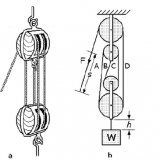Google I/O 2011: Cloud Robotics Presentation – New Era in Robotics – 11046
Ryan Hickman, Damon Kohler, Ken Conley, Brian Gerkey
Learn how developers can accelerate the pace of robotics research and development and make high functioning robots affordable and universally accessible.
In this video presentation Google explains the following topics:
-Cloud Connected Robots,
-Android Open Accessory API,
-Object Recognition Service by Google,
-Mapping and NAvigation by Google,
-The Cloud enables sarter Robots that talk with google services,
-Personel Robots need to be inexpensive,
-RosJava
-Android Possibilities
Video Link: http://youtu.be/FxXBUp-4800
Google’s Cloud Robotics Strategy
At the 2011 Google I/O developer’s conference, Google announced a new initiative called “cloud robotics” in conjunction with robot manufacturer Willow Garage. Google has developed an open source (free) operating system for robots, with the unsurprising name “ROS” — or Robot Operating System. In other words, Google is trying to create the MS-DOS (or MS Windows) of robotics.
With ROS, software developers will be able to write code in the Java programming language and control robots in a standardized way — much in the same way that programmers writing applications for Windows or the Mac can access and control computer hardware.
Google’s approach also offers compatibility with Android. Robots will be able to take advantage of the “cloud-based” (in other words, online) features used in Android phones, as well as new cloud-based capabilities specifically for robots. In essence this means that much of the intelligence that powers the robots of the future may reside on huge server farms, rather than in the robot itself. While that may sound a little “Skynet-esque,” it’s a strategy that could offer huge benefits for building advanced robots.
“One of the most important cloud-based robotic capabilities is certain to be object recognition.”
Cloud robotics is likely to be a powerful tool in ultimately solving that challenge. Android phones already have a feature called “Google Goggles” that allows users to take photos of an object and then have the system identify it. As this feature gets better and faster, it’s easy to see how it could have a dramatic impact on advances in robotics. A robot in your home or in a commercial setting could take advantage of a database comprising the visual information entered by tens of millions of mobile device users all over the world. That will go a long way toward ultimately making object recognition and manipulation practical and affordable.
Cloud Based Approach
Cloud robotics is an emerging field of robotics rooted in cloud computing, cloud storage, and other Internet technologies centered around the benefits of converged infrastructure and shared services. It allows robots to benefit from the powerful computational, storage, and communications resources of modern data centers. In addition, it removes overheads for maintenance and updates, and reduces dependence on custom middleware.
Cloud robotics allows robots to take advantage of the rapid increase in data transfer rates to offload tasks without hard real time requirements. This is of particular interest for mobile robots, where on-board computation entails additional power requirements which may reduce operating duration and constrain robot mobility as well as increase costs.

In general, there are some important advantages to the cloud-based approach:
1-As in the object recognition example, robots will be able to take advantage of a wide range of online data resources.
2-Migrating more intelligence into the cloud will make robots more affordable, and it will be possible to upgrade their capability remotely — without any need for expensive hardware modifications. Repair and maintenance might also be significantly easier and largely dealt with remotely.
3-It will be possible to train one robot, and then have an unlimited number of other robots instantly acquire that knowledge via the cloud. As I wrote previously, I think that machine learning is likely to be highly disruptive to the job market at some point in the future in part because of this ability to rapidly scale what machines learn across entire organizations — potentially threatening huge numbers of jobs.
How Cloud Robotics Could Soon Threaten Jobs
The last point cannot be emphasized enough. I think that many economists and others who dismiss the potential for robots and automation to dramatically impact the job market have not fully assimilated the implications of machine learning. Human workers need to be trained individually, and that is a very expensive, time-consuming and error-prone process. Machines are different: train just one and all the others acquire the knowledge. And as each machine improves, all the others benefit immediately.
Imagine that a company like FedEx or UPS could train ONE worker and then have its entire workforce instantly acquire those skills with perfect proficiency and consistency. That is the promise of machine learning when “workers” are no longer human. And, of course, machine learning will not be limited to just robots performing manipulative tasks — software applications employed in knowledge-based tasks are also going to get much smarter.
The bottom line is that nearly any type of work that is on some level routine in nature — regardless of the skill level or educational requirements — is likely to someday be impacted by these technologies. The only real question is how soon it will happen.




